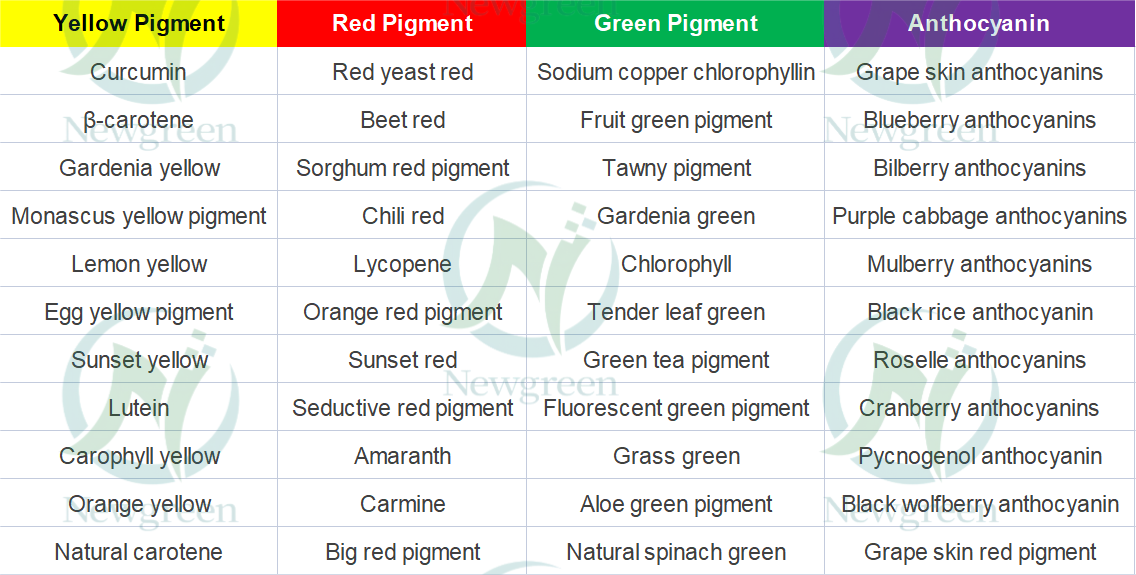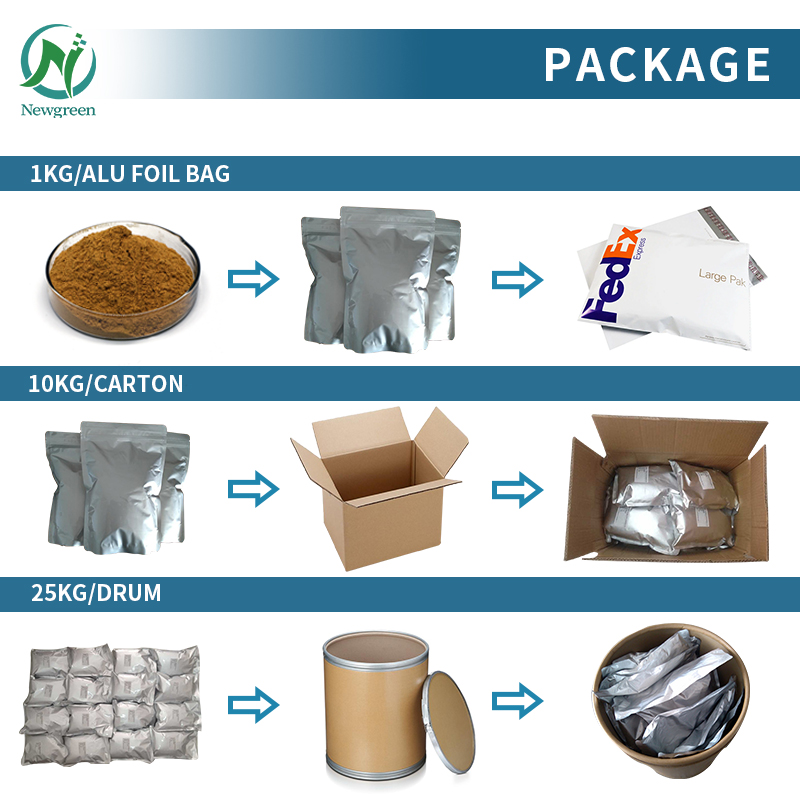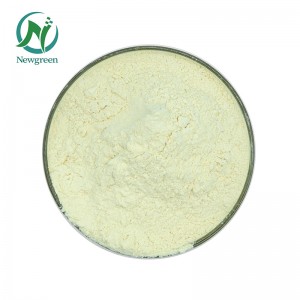Newgreen Supply 100% Natural Green Tea Pigment Powder 90% With Best Price

Product Description
Green tea pigments mainly refer to natural pigments extracted from green tea. The main ingredients include tea polyphenols, chlorophyll and carotenoids. These ingredients not only give green tea its unique color and flavor, but also provide numerous health benefits.
Main ingredients and their characteristics:
1. Tea polyphenols:
Tea polyphenols are the most important active ingredients in green tea. They have strong antioxidant properties and can scavenge free radicals and slow down the aging process.
Research shows that tea polyphenols may help reduce the risk of cardiovascular disease and certain cancers.
2. Chlorophyll:
Chlorophyll is a key component of plant photosynthesis and gives green tea its green color.
Has certain antioxidant and detoxifying effects.
3. Carotenoids:
These natural pigments are present in smaller amounts in green tea, but also contribute to antioxidant and vision protection.
COA
| Items | Specifications | Results |
| Appearance | Green powder | Complies |
| Order | Characteristic | Complies |
| Assay( Green Tea Pigment) | ≥90.0% | 90.25% |
| Tasted | Characteristic | Complies |
| Loss on Drying | 4-7(%) | 4.12% |
| Total Ash | 8% Max | 4.85% |
| Heavy Metal | ≤10(ppm) | Complies |
| Arsenic(As) | 0.5ppm Max | Complies |
| Lead(Pb) | 1ppm Max | Complies |
| Mercury(Hg) | 0.1ppm Max | Complies |
| Total Plate Count | 10000cfu/g Max. | 100cfu/g |
| Yeast & Mould | 100cfu/g Max. | >20cfu/g |
| Salmonella | Negative | Complies |
| E.Coli. | Negative | Complies |
| Staphylococcus | Negative | Complies |
| Conclusion | Conform to USP 41 | |
| Storage | Store in a well-closed place with constant low temperature and no direct sun light. | |
| Shelf life | 2 years when properly stored | |
Function
Green tea pigments mainly refer to natural pigments extracted from green tea. The main ingredients include tea polyphenols, catechins, chlorophyll, etc. These ingredients not only give green tea its unique color, but also provide a variety of functions and health benefits. Here are some of the main functions of green tea pigments:
1. Antioxidant effect: Green tea pigments are rich in antioxidants, which can help neutralize free radicals, slow down cell aging, and reduce the risk of chronic diseases.
2. Anti-inflammatory effect: The ingredients in green tea have anti-inflammatory properties and help reduce the inflammatory response in the body.
3. Promote metabolism: Green tea pigments can promote fat oxidation and metabolism, helping weight management and weight loss.
4. Improve cardiovascular health: Research shows that green tea pigments help lower cholesterol levels and improve blood vessel function, thereby benefiting cardiovascular health.
5. Enhance immunity: The ingredients in green tea can enhance the function of the immune system and improve the body's resistance.
6. Antibacterial and Antiviral: Green tea pigments have certain antibacterial and antiviral properties that can help fight off certain infections.
7. Liver Protection: Some studies show that green tea pigments may have a protective effect on the liver and help prevent liver disease.
8. Improve skin health: Green tea pigments can help improve skin condition, slow down skin aging, and have a certain skin beautifying effect.
Overall, green tea coloring is not only used as a natural color in food and beverages, but it is also gaining widespread attention for its health benefits.
Application
Green tea pigments, whose main components are tea polyphenols and chlorophyll, have a variety of biological activities and are widely used in many fields. The following are the main applications of green tea coloring:
1. Food Industry: Green tea pigments are often used as natural colorants in food and beverages. They can provide green or light yellow colors to products and also increase antioxidant properties. For example, green tea drinks, candies, pastries, etc.
2. Health products: Due to its rich antioxidant content, green tea pigments are widely used in health products to help improve immunity, resist aging, promote metabolism, etc.
3. Cosmetics: Green tea pigments are often added to skin care products and cosmetics due to their antioxidant and anti-inflammatory properties to help improve skin quality and slow down the aging process.
4. Drugs: In some drugs, green tea pigments are used as auxiliary ingredients, which may help enhance the efficacy of the drug or improve the stability of the drug.
5. Textiles and Cosmetics: Green tea pigments can also be used to dye textiles, providing natural green dyes.
In short, green tea pigments are increasingly favored by various industries because of their natural, safe and multifunctional properties.
Related products

Package & Delivery

















